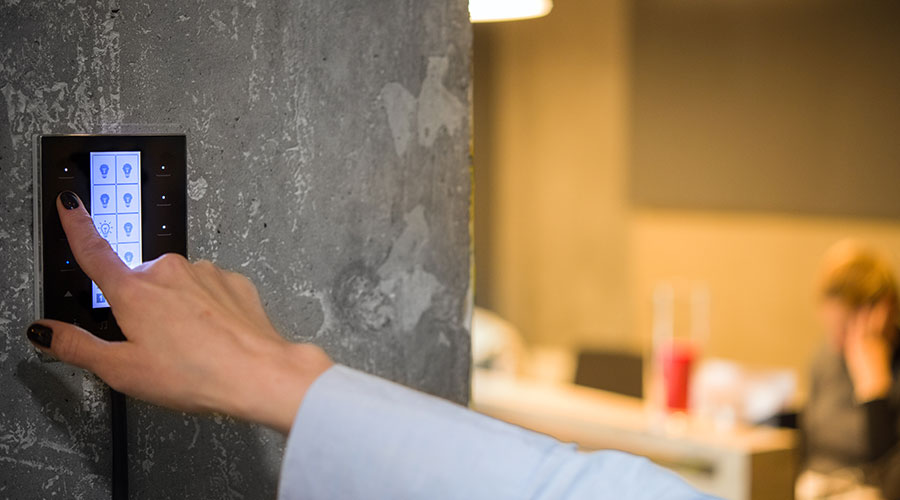Lighting Controls Can Amplify Effect Of More Efficient Light Sources
While switching to more efficient light sources (e.g., LED) is a great way to cut energy use and cost, integrating that step with lighting controls may significantly amplify the impact. Controls may also add flexibility and sophistication that yield extra perks (e.g., higher rents) that go way beyond the electric bill.
Maximizing and sustaining the benefits of controls, however, requires attention to selection, commissioning and maintenance. Fortunately, the controls industry is on the case.
Once efficient fixtures and lamps have been chosen, there are really only two ways to further reduce energy use: Reduce burn hours or reduce light output. To perform either of those functions, you need a lighting control.
While hard to believe today, some buildings erected before the 1974 energy crisis lacked wall switches. Lights could only be shut off by flipping a breaker, or remotely controlling a relay that shut off an entire floor's fixtures. The end result was lights often staying on all night. In some cases, that was the desired goal. Back in the '60s when power was cheap (and building developers even cheaper), the concept of "light as heat" was popular as a way to keep buildings warm without installing a heating system. Today, many state building codes and standards strongly encourage (or require) various types and levels of lighting control for new or significantly renovated buildings.
Due to advances in the last five years, accomplishing those ends have become more cost effective. Those methods are simpler in some ways but in others more challenging to designers, contractors and customers.
Looking At The Options
Commercialization of several novel technologies has expanded ways to apply controls to both existing and new installations. Competition and standardization in wireless communications protocols, for example, now provide options that avoid the usually costly installation of separate control wiring, often a deal killer when adding controls to existing lighting. Unlike only a decade ago, one now finds:
- Wireless switching that uses power generated by one's finger (when pushing the on-off button) to send a radio signal from the switch to a relay built into (or added to) fixtures in the same room.
- Wireless stations that, when directed by a control panel, send signals to receivers that control whole circuits of fixtures, or to groups of fixtures based on electronic addresses built into their ballasts.
- Reliable power-line carrier (PLC) control products, using panels and dimming ballasts (either step or continuous), that have expanded and become cheaper, offering a third way to retrofit without requiring additional wiring.
These options are competing with the now standard Digital Addressable Lighting Interface (DALI) systems that use dedicated low-voltage wiring to control individual fixtures. DALI is often installed in new or heavily renovated facilities while ceilings are open and spaces are unoccupied. Wireless systems are often applied where spaces are already in use.
Back to School
A good way a facility manager can get a handle on lighting control options and methods is to take a class from the Lighting Controls Association (www.lightingcontrolsassociation.org). That trade group offers very good (and free) online training, videos, etc., to help potential customers (and facility personnel) take advantage of that industry's offerings. Its "EE101: Introduction to Lighting Control" is a popular part of its Education Express series of online distance courses. To review a list of its lighting controls webinars, go to
www.aboutlightingcontrols.org/Education_Express/welcome.php |
Related Topics:













